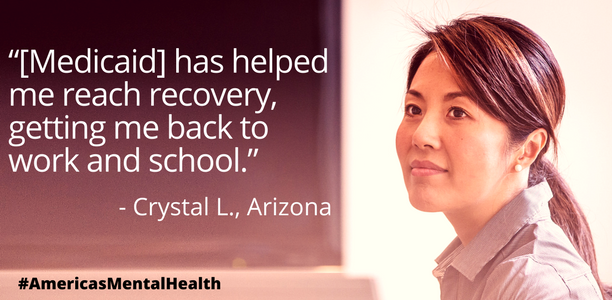“Emotional health is defined by four markers: our degree of self-love, of openness, of communication and of trust.”
– Video published by The School of Life on November 21, 2017.
“Emotional health is defined by four markers: our degree of self-love, of openness, of communication and of trust.”
– Video published by The School of Life on November 21, 2017.

The ECoWeB Project aims to develop and disseminate a mobile application (App) to provide engaging and personalized tools and psychological skills to promote emotional wellbeing and prevent mental health problems in adolescents and young adults.
The app and corresponding tasks are designed to help monitor emotions, learn what can influence emotional responses, and develop new emotional skills.
The project team comes from eight European nations (the UK, Germany, Belgium, Spain, Greece, the Czech Republic, Denmark, and Switzerland) to improve mental health care and access for youth.
The project actively seeks to establish research and application partnerships with important actors in the health, education, and employment areas (such as government and community agencies, health insurances, self-help groups, parent associations, school and employer organizations).
For info: http://www.ecowebproject.eu/
Emotional growth and the importance of connection and self-expression.
“From our earliest days, all of us are set on a path towards physical growth and maturity. What is less well known is that there are forces within us that – in comparable ways – push us towards emotional growth and maturity. Throughout our lives, sometimes at considerable cost to our short term peace of mind, we’re engaged on a journey of emotional development that we should learn to understand, recognise and honour.”
Published on October 11, 2018 by The School of Life
Video: 6 minutes 24 seconds
#TheSchoolOfLife #EmotionalGrowth #Self
 World Mental Health Day seeks to raise awareness of mental health illnesses while educating the population and mobilizing efforts to support mental health.
World Mental Health Day seeks to raise awareness of mental health illnesses while educating the population and mobilizing efforts to support mental health.
Mental health, which includes a person’s emotional, psychological and social well-being, has become increasingly important in recent decades as an estimated 350 million people worldwide suffer from depression.
In 1992, the World Federation for Mental Health (WFMH) established World Mental Health Day in an effort to promote education and advocate for mental health sufferers. The Foundation aims to provide further awareness and assistance for those suffering from a wide range of mental disorders in the hopes of saving lives and increasing quality of life for these individuals.
World Mental Health Day is celebrated annually on October 10.
Depression can lead to suicide. More than 800,000 people worldwide take their own lives every year.
Suicide is the third leading cause of death in the world for individuals 15 to 44.
The World Federation for Mental Health is focusing the 2018 WMHDAY campaign on Young People and Mental Health in a Changing World. #worldmentalhealthday
“Schools that are highly engaged in whole-school emotional and social health promotion are likely to be more effective in providing for the psychosocial and educational needs of their whole student community.”
A paper has been published that describes the development of a survey designed for use in research and in educational practice that measures the implementation of whole-school mental health promotion.
The survey differentiates states of high, moderate, and low implementation of whole-school policies and practices that promote the emotional and social health of students.
Responses were gathered from principals in almost 600 Australian primary schools in New South Wales.
Review of the results may guide the identification of target areas for whole-school improvement in four important health-promoting domains.
Dix, K.L., Green, M.J., Tzoumakis, S. et al. School Mental Health (2018).
“Being alone can have great value. It can allow issues to surface that people spend energy holding at bay, and offer an opportunity to clarify thoughts, hopes, dreams and desires.”
These words are found in an article, “Spending time alone in nature is good for your mental and emotional health” published in The Conversation and republished in Ecologist.
The article is written by Brad Daniel, professor of outdoor education at Montreat College, Andrew Bobilya, associate professor and program director of Parks and Recreation Management, Western Carolina University, and Ken Kalisch, associate professor of outdoor education at Montreat College.
The authors write, “While some equate solitude with loneliness, there is a big difference between being lonely and being alone. The latter is essential for mental health and effective leadership.”
Based on almost 20 years of research, they have found, “Scholars in fields including wilderness therapy and environmental psychology have shown that time outdoors benefits our lives in many ways. It has a therapeutic effect, relieves stress and restores attention. Alone time in nature can have a calming effect on the mind because it occurs in beautiful, natural and inspirational settings. Nature also provides challenges that spur individuals to creative problem-solving and increased self-confidence.”
The article concludes, “In order to live and lead effectively, it is important to be intentional about taking the time for solitary reflection. Otherwise, gaps in schedules will always fill up, and even people with the best intentions may never fully realize the life-giving value of being alone.”
If you grew up with an emotionally immature, unavailable, or selfish parent, you may have lingering feelings of anger, loneliness, betrayal, or abandonment. You may recall your childhood as a time when your emotional needs were not met, when your feelings were dismissed, or when you took on adult levels of responsibility in an effort to compensate for your parent’s behavior. These wounds can be healed, and you can move forward in your life.
In her 216-page book published by New Harbinger Publications in 2015, “Adult Children of Emotionally Immature Parents: How to Heal from Distant, Rejecting, or Self-Involved Parents,” clinical psychologist Lindsay Gibson exposes the destructive nature of parents who are emotionally immature or unavailable.
Gibson describes how such parents create a sense of neglect and offers ways people can heal from pain and confusion caused by childhood. She writes that by freeing yourself from parental emotional immaturity, you can recover your true nature, control how you react, and avoid disappointment. Gibson teaches how to create positive, new relationships to build a better life.
Should everyone have a right to quality mental health care?
Consider these statistics:
• Mental health conditions cost the economy an estimated $193 billion dollars in lost earnings each year.
• Mental health conditions are the number one cause of disability and workplace absenteeism.
• Suicide is at a 30-year high. Every day, an average of 117 people die by suicide.
• Up to 25% of people who are homeless live with a serious mental illness.
• People with serious mental illness are jailed at nearly 4 times the rate of other individuals.
From the implementation of the Affordable Care Act and Medicaid expansion, to the mental health provisions in the 21st Century Cures Act, millions of Americans have gained access to quality, affordable care. What’s the future of such legislation?

“Negative emotions are essential for mental health.” – Tori Rodriguez, psychotherapist and Ayurvedic health coach in private practice, published by Scientific American (May 1, 2013).
According to Tori Rodriguez:
“Although positive emotions are worth cultivating, problems arise when people start believing they must be upbeat all the time. In fact, anger and sadness are an important part of life, and new research shows that experiencing and accepting such emotions are vital to our mental health. Attempting to suppress thoughts can backfire and even diminish our sense of contentment.”
See the article at ScientificAmerican.com originally published with the title, “Taking the Bad with the Good.”
See Bettie Page Fitness for more about Tori Rodriguez.
“Mental and emotional well-being is essential to overall health. Positive mental health allows people to realize their full potential, cope with the stresses of life, work productively, and make meaningful contributions to their communities.”
– Excerpt from a web page at SurgeonGeneral.gov, a website of the U.S. Department of Health & Human Resources
The web page offers four recommendations for mental and emotional well-being and addresses each of the following questions in specific terms:
• What Can State, Tribal, Local and Territorial Governments Do?
• What Can Businesses and Employers Do?
• What Can Health Care Systems, Insurers, and Clinicians Do?
• What Can Early Learning Centers, Schools, Colleges, and Universities Do?
• What Can Community, Non-Profit, and Faith-Based Organizations Do?
• What Can Individuals and Families Do?
Original Links: surgeongeneral.gov/priorities/prevention/strategy/mental-and-emotional-well-being.html and surgeongeneral.gov/priorities/prevention/strategy/mental-emotional-well-being.pdf
The Surgeon General’s Report on Mental Health (1999) spotlights ways to overcome barriers to treatment.